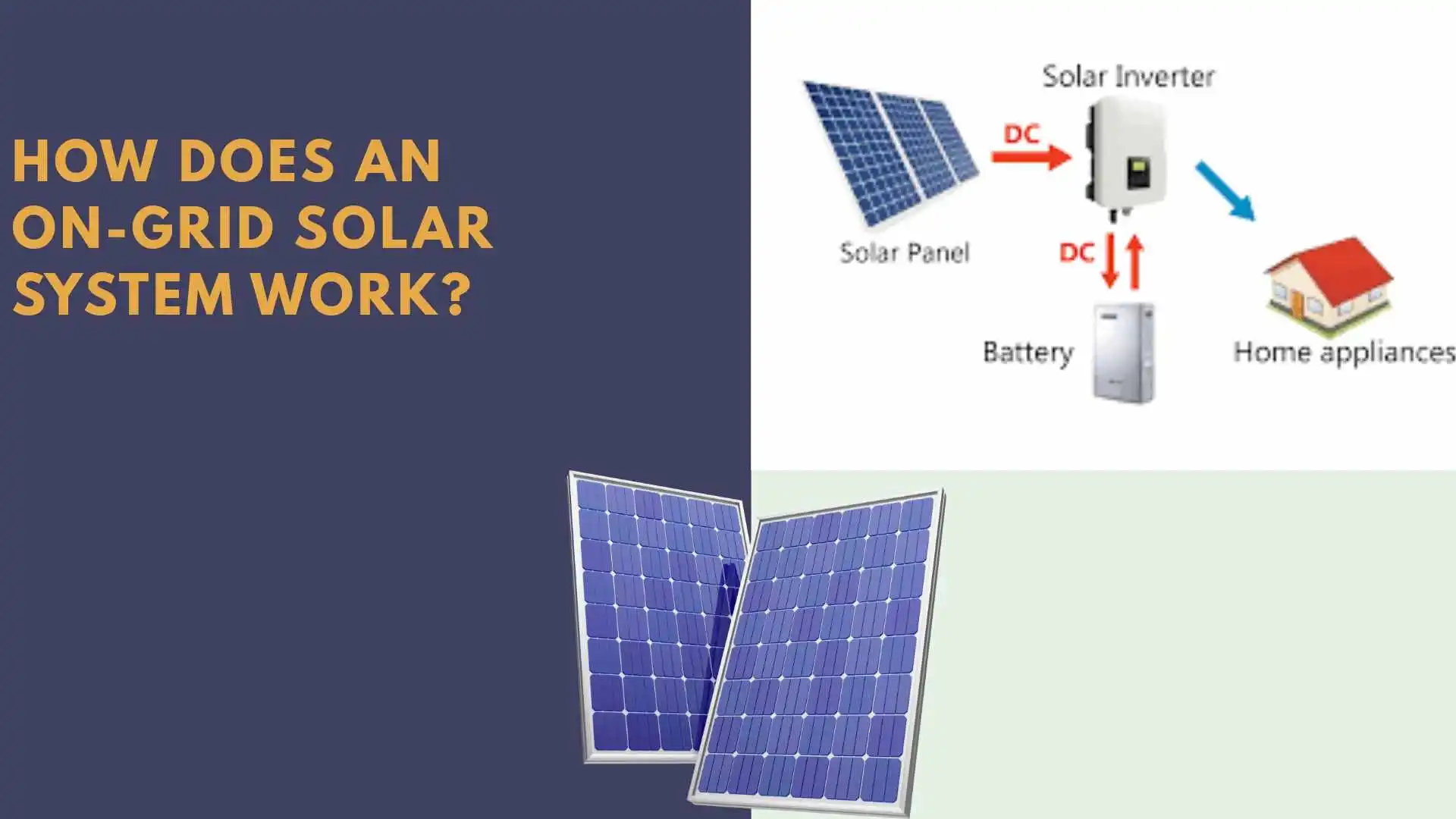Complete Guide to On Grid Solar Systems in the USA 2025
An on grid solar system is a smart and efficient way to power your home or business while reducing dependence on the national grid. These systems are connected directly to the electricity grid, making it easy to send excess solar power back to the grid and earn credits. In the USA, solar energy adoption has grown rapidly in 2025, as more homeowners and businesses look for sustainable, cost-effective alternatives to traditional power sources.

This guide will walk you through everything you need to know about on grid solar—how they work, their benefits, the installation process, and why they are a great option for addressing the USA’s energy needs. Whether you are considering installation or just want to learn more, this guide provides essential details to help you make an informed decision.
If you want to know complete details about solar system then please visit Solar Thermal System.
What is an On-Grid Solar System?
On grid systems are connected directly to the electrical grid. These systems generate electricity from sunlight using solar panels and convert it into usable power for your home or business. Any surplus electricity that is generated is sent back to the grid, often resulting in credits or payments from the utility provider.
This setup doesn’t require battery storage because the grid itself acts as a backup when solar production isn’t sufficient, making it ideal for areas with consistent grid access and plenty of sunlight. In the USA, where sunlight is abundant in many regions, this system is becoming an increasingly popular choice.
Understanding the Basics of On Grid Solar Systems
The core function of an on grid system is its ability to generate clean energy and share excess energy with the grid. on grid systems are often referred to as “grid-tied” because they operate by synchronizing with the existing electrical grid. By doing so, they help decrease dependence on traditional fossil fuels and can lead to long-term savings on electricity costs.
In the USA, the grid connection allows for a seamless energy exchange between solar power generation and consumption, meaning that your solar system can provide you with energy whenever it’s needed, even when the sun isn’t shining.
Benefits of Choosing an On Grid Solar System
On grid systems offer a variety of benefits for homeowners and businesses alike. The most notable advantage is the potential for reduced electricity bills. By generating your own solar power, you rely less on the grid, which reduces monthly utility costs. On top of that, on grid systems are easy to maintain and cost-effective to install.

Lower Electricity Bills and Earning Credits
Because your solar panels generate electricity from sunlight, you can significantly lower your monthly electricity bills. If your system produces more power than you need, the excess is sent to the grid. Depending on the local utility provider, this excess energy may earn you credits or even cash payments, helping you save even more on your energy costs.
How Does an On Grid Solar System Work?
On grid solar generate electricity by converting sunlight into direct current (DC) power through solar panels. This power is then converted to alternating current (AC) by an inverter, making it usable for your home or business. The system works seamlessly with the grid, using power from the grid when necessary and feeding back any excess energy produced.

Step-by-Step Process of an On Grid Solar System
Key Components of an On Grid Solar System
There are four key components that make up an on-grid solar system: solar panels, an inverter, a meter, and the grid connection itself. These elements work together to ensure the system operates efficiently, providing your home or business with solar power and sending excess energy back to the grid.
Key Components of an On Grid Solar System
Step-by-Step Guide to Installing an On Grid Solar System
Before installing an on-grid solar system, it’s important to prepare your home or business for the setup. Ensure that your location has enough sunlight exposure and that your roof is structurally sound to support the solar panels.
Pre-Installation Checklist for On Grid Solar Systems
Understanding the Installation Process
Post-Installation Maintenance Tips for On Grid Systems
While on grid systems generally require minimal maintenance, it’s important to keep them in good condition to ensure maximum performance over the years.

Regular Cleaning and Monitoring
Annual Check-ups
Schedule annual check-ups with a certified technician to ensure everything, including the inverter and meter, is functioning properly. Regular maintenance will help extend the life of your system.
On-Grid Solar Systems in the USA – Key Considerations
On grid solar are becoming increasingly popular in the USA due to their low upfront costs, easy maintenance, and potential for energy savings. The USA is an ideal location for solar energy, as it enjoys abundant sunlight in many regions.
Why On Grid Solar is Ideal for the USA’s Energy Needs
Given the USA’s rising energy costs and the growing concern over environmental impacts, on grid systems are an attractive option. They help reduce electricity bills, contribute to environmental sustainability, and provide energy independence.
Is an On-Grid Solar System the Right Choice for You?
Before choosing an on grid system, evaluate your home or business’s solar potential. Assess your location’s sunlight availability, the condition of your roof, and whether you have reliable grid access. on grid systems are best for areas with consistent sunlight and stable grid access.
Evaluating Your Home’s Solar Potential
A professional solar installer can evaluate your property and help determine the ideal system size based on your energy usage and roof conditions.
On Grid Solar vs. Off Grid Solar – Which One is Right for You?
When deciding between on grid and off-grid solar systems, the choice depends on where you live, how much energy you need, and your budget.

Key Differences Between On Grid and Off Grid Solar Systems
| Feature | On-grid Solar System | Off-Grid Solar System |
|---|---|---|
| Connection to Grid | Connected to the national grid | Not connected |
| Energy Storage | No batteries required | Requires batteries |
| Cost | Lower initial cost | Higher initial cost |
| Maintenance | Minimal maintenance | Requires battery upkeep |
| Energy Availability | Depends on grid and sunlight | Independent of grid |
Future of On Grid Solar Energy in the USA – Trends to Watch in 2025
Emerging technologies like bifacial solar panels and smart inverters are expected to increase the efficiency of on grid solar. These advancements make solar energy even more cost-effective and reliable.
The Role of On Grid Solar in the USA’s Energy Transition
As the USA continues to shift toward renewable energy, on-grid solar systems will play a crucial role in reducing reliance on fossil fuels. With continued innovation and supportive government policies, solar energy will contribute to a cleaner, more sustainable future.
Conclusion
On-grid solar systems are an excellent choice for homeowners and businesses looking to reduce energy costs and rely less on the national grid. They are affordable to install, easy to maintain, and ideal for areas with stable grid access and plenty of sunlight. By generating clean energy, on grid systems help save money and contribute to a more sustainable future.
With continuous advancements in solar technology, these systems are becoming even more efficient and cost-effective. The shift toward renewable energy in the USA makes on grid solar a smart investment for the long term.
If you’re considering adopting solar energy, on grid solar is a reliable option that can meet your needs while helping the environment. Whether you are reducing your carbon footprint or lowering your electricity bills, on grid solar is a valuable choice for a brighter, greener future.
